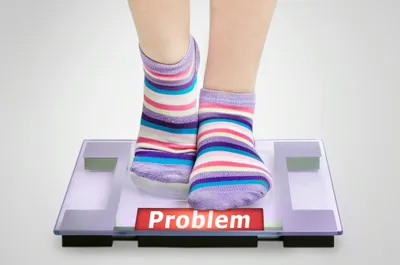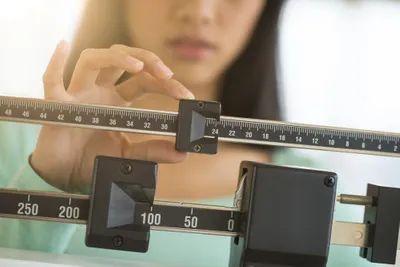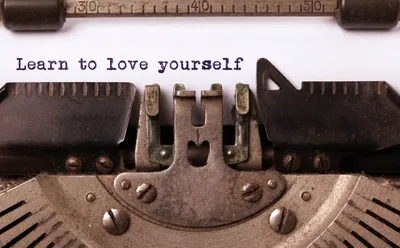Perhaps the term “body acceptance” is a familiar one, but in a society where we celebrate the thigh gap it may be a pipe dream to assume it is achievable. We appear to be educating young people to love themselves just as they are yet turn around the next minute and dictate what foods they should (and should not) be eating to avoid getting fat. As a result, the rate of dieting among children is rising with an estimated 40-percent of 9-year old girls on a diet to lose weight, according to the National Eating Disorder Information Center.
Although the common societal belief is fat is the enemy, research suggests the exact opposite. Having a healthy layer of subcutaneous fat (that is, at under the skin) is good for us. A study out of Norway examined 1.7-million people over a long period of time and found those with a higher body mass index (BMI) of 26 to 28 had a greater life expectancy that those within the normal “healthy” ranges of BMI. So if having body fat is healthier, why are we so focused on thinness? Here’s how we can we roll with our paunches and get comfortable with ourselves (fatty lumps and all)…
1. Understanding the Fatty Facts
The first step to getting comfortable with body fat is challenging what we think we know about fat. While it is in fashion to be thin, and sport the latest in skinny jeans or pencil skirts, is it healthy (and since when did fashion ever consider health anyways?). The surprising answer, based on years of research, is no, it isn’t. It’s not the fat that harms our health; it’s the lack of exercise and healthy eating behaviors that are related to it that does most harm.
Dr. Steven Blair has been a pioneer in the study of exercise and obesity for over 30-years. Through his research, he has demonstrated that only 30-minutes of physical activity a day is enough to drive down the rate of death by 50-percent. In short, one can be fit, fat, and healthy. In addition, Dr. Blair has suggested that our fear of fat is based upon faulty research that has failed to include exercise.
2. Focus on Body Movement vs. Body Fat
Paul Campos, in his book The Obesity Myth, has reviewed the research on obesity and chronic disease and mirrors the suggestions of Dr. Blair. Individuals that are physically active, no matter what the size or shape, will benefit from greater health than those that are sedentary.
Moreover, enjoying a body that is naturally thin does not mean a longer life unless that body is moving. By arming oneself with the facts about fat and health, one may be more motivated to go for a walk for the health of it without the pain and agony usually experienced in the name of fat loss.
3. Challenging Our Beliefs about Fat
It’s one thing to talk fatty science, but another altogether to challenge the beliefs and attitudes of a society that fears fat. There is a stigma attached to overweight and obesity that affects all most people (unless one is living under a rock or miles away from civilization).
The belief that those who are overweight are lazy, gluttonous, and lack the self-control necessary to make a change permeates our culture. In fact, making fun of the overweight and obese person is the last remaining socially accepted bullying behaviour left. Overweight and obese people continue to be negatively portrayed in the media.
4. Body Acceptance in All Shapes and Sizes
Unfortunately, when we live in a society that doesn’t accept all sizes and shapes, we tend to internalize these cultural beliefs and resulting in negative self-talk. So how does one become happy or even accepting of one’s body if it doesn’t adhere to such stringent guidelines?
The first step may include becoming more familiar with those negative beliefs and attitudes about one’s body. How do they influence moods, physical activity, and life enjoyment? Finally, how can we make a positive change that doesn’t include weight loss?
5. Get Comfortable With Your Size
We see it on TV and read it in our favorite magazines, finding clothes that fit the body (without having to use a crowbar and coconut oil to get dressed in the morning) is not only the secret to dressing well, but may lead to a greater sense of comfort with our size and ourselves. How many of us cling to those jeans we used to wear years ago with the hope of getting back to that size someday? Or worse, we force ourselves to wear pants that are too tight while our muffin tops make it impossible to pick up a pen without having to get down on the floor.
If this sounds all too familiar, it is time to take a deep, cleansing breath and make the transition to a size that fits well and allows for adequate blood flow. It’s a tough move to make, but, ironically, choosing the right clothing for our size will not only accent any body shape but will increase the confidence of the fashionista. Remember, the size of the skirt doesn’t make the person but the overwhelming feeling of confidence walking in clothes that fit well can make your day!
6. Body Appreciation and Acceptance
Although there is a lot of talk about embracing our curves or loving the skin we’re in just how does one achieve body acceptance while reading a magazine promoting the “best beach body ever”? Being able to appreciate and accept one’s body is the key to a positive and healthy self-image but the process takes time, commitment, and practice.
A study from the University of Waterloo examined the relationship between weight fluctuations and interpersonal messages of body acceptance. Interestingly, those individuals who had received acceptance messages from others lead to a reduction in stress about weight and even a weight loss overtime. Positive psychologists suggest listing body strengths and characteristics as one way to begin to appreciate one’s body and all it does. Make a commitment to begin each day with positive thoughts about body and appearance…no negative thoughts allowed! Overtime, it will become less effortful and more habitual.
7. Practice! Practice! Practice!
All change takes time and is a fact that most of us want to deny. From eating less sugar to getting more exercise, practice will (eventually) make perfect. It is a common belief that if we continue to practice the new behavior for a period of 21 days, it will become a habit.
The reality is, new habits are volatile and can revert back to the comfort of old behaviours years after the initial change occurred. The good news is the more time and energy dedicated to changing the greater the success of change.
8. Replace Negative with Positive Thoughts
Through a shift in our thoughts, our emotions and behaviour can change. If the goal is to cultivate a more positive image of our bodies, a commitment to challenging and changing those pesky negative thoughts is the key.
Instead of waking up in the morning and instantly thinking about the belly lumps or thigh dimples, redirect those thoughts to physical attributes that are loved and appreciated (and repeat over and over again). Even if these thoughts may not be believed in the beginning, replacing those negative thoughts with the positive ones will become easier and (bonus) more believable overtime.











